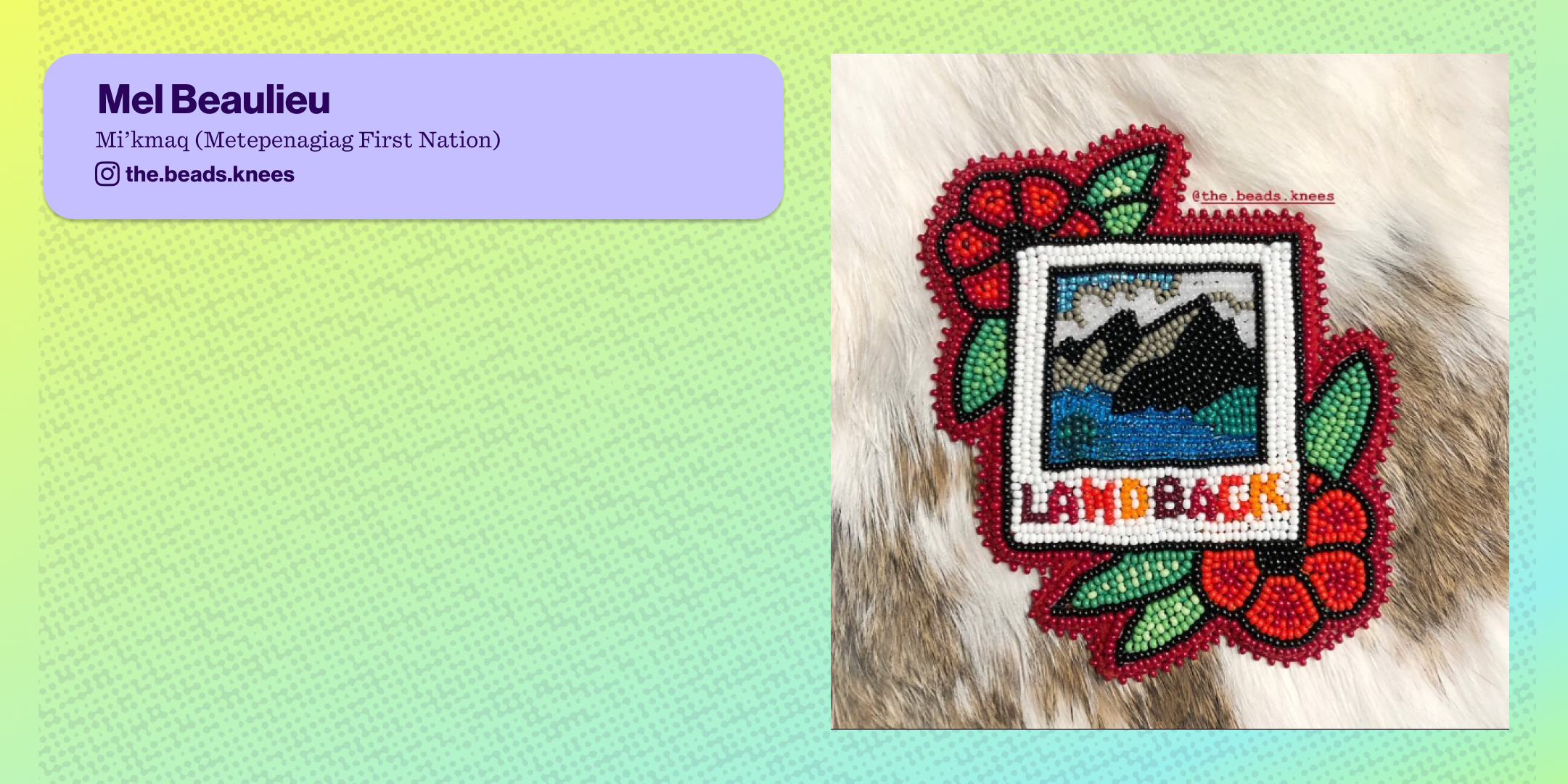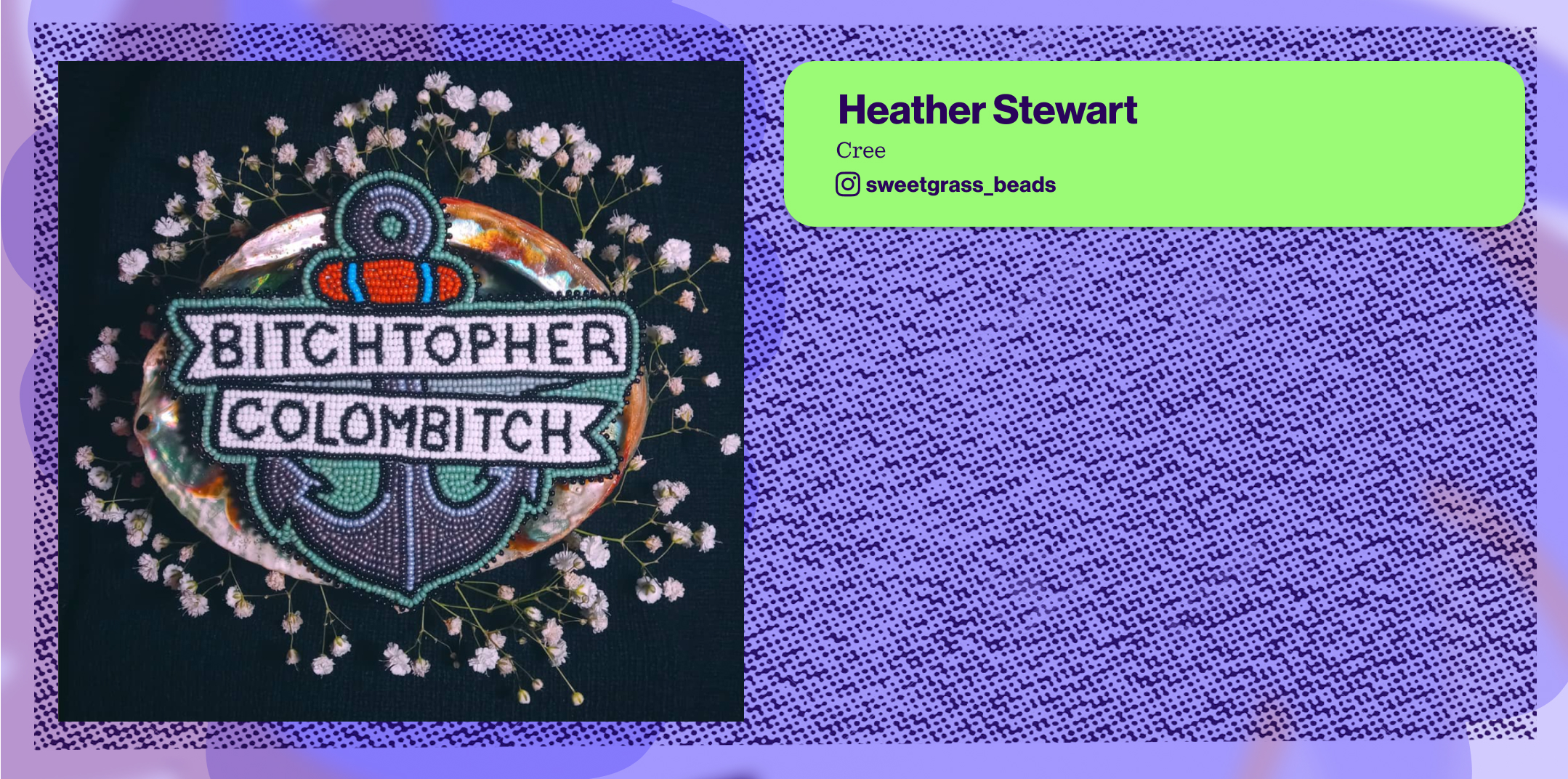Typography and Native American Beadwork

I would like to kick off Native American History (Futures) Month by featuring contemporary type and beading designers in the People's Design Archive. Beading holds a unique place in Native histories, as it bridges the gap between cultures, writing systems, and communication. It exists at the intersection of both art and design. Before European contact, the hundreds of Native tribes had their own distinct styles of beadwork. Beads were made from materials such as clay, shells, and metal. The symbols and pictograms in traditional beadwork contain treaties, stories, and histories that have stood the test of time.
With European contact came glass beads and Western writing systems. As white settlers colonized the Americas, their writing systems became dominant as did imported glass beads. In present-day, white-led mainstream design culture where computers dominate, beading has often been overlooked as a form of communication and design. Yet, beadwork continues to play an important role in communication and the preservation of history, carrying forward a legacy of connection and expression.

Jesse Rae Growing Thunder, Assiniboine
Beadwork has traditionally incorporated symbols and pictographs as a form of storytelling and identity. Contemporary designs are no different. While traditional tribal symbols remain a central subject of beadwork, Native beading has also become a form of resistance and protest.

Mel Beaulieu, Mi'kmaq (Metepenagiag First Nation)
In beadwork, lettering styles are often dictated by beading techniques and the scale of the piece. Flat beading is the most common technique used to integrate written language into the medium. Flat Native American beading is a common technique where beads are sewn closely together to create a smooth, even surface. This method is often used when creating expressive beadwork. The technique can allow for clean lines or movement. Since beads are typically very small, the lettering in beading often features monoweight, thin letterforms. As the dimensions of the design increase, or as bead sizes decrease, there is more room for variation in lettering and technique.

Heather Stewart, Cree
Monoweight lettering in Native beadwork uses letters that are the same thickness throughout. This works well because beads are small, making it hard to create detailed letters. The even thickness keeps the text clear and fits with the careful, precise work of beading. It also complements the patterns often seen in Native designs, adding to their beauty and meaning.

Skye Paul, Dënesułiné

Mel Beaulieu, Mi'kmaq (Metepenagiag First Nation)
Non-script monotype is perhaps the most common form we see in Native beading. However, there is still great variety in designs. Similar to pixels in 8-bit video game typography, Native designers will use a string grid to create lettering. As 8-bit games use pixels to form letters and images, beads are arranged to create new designs. This technique is used for both flat beading and loom beading.

Rissa Begay, Navajo

Dani LaValley, Michif + Nêhiyaw (Cree)
Expressive
Expressive type in bead work can be made in any beading technique but is most often expressed with flat beading. Moving away from a strong grid system, these type pieces show off how beads can take on a personality.

Mikaila Stevens, Mi’kmaw

Deanne Hupfield, Anishinaabe
Loom and raised beading
While flat beading is dominant, techniques like loom beading and raised beading are less common but truly impressive. Loom beading involves weaving beads on a loom, creating smooth and flat designs. When used for type, it can give letters a clean, structured look often associated with pixel art. On the other hand, raised beading adds depth by layering beads on top of the fabric or other beads. This gives the text a more dynamic, tactile feel, making the lettering lift off the fabric.

Unknown, Tuscarora
Back in November 2022, Bobby Joe Smith III wrote an article for the People's Design Archive blog in which he responded to the need to not just recognize historical Native designers, but to also celebrate contemporary designers making their own mark.
“I want to add more work by contemporary designers. I was surprised and honored when I found someone had submitted some of my work to The People’s Graphic Design Archive. It made me want to add the stunning and compelling work of my friends—work that has shaped me as a person and designer.” - Bobby Joe Smith III
This post is my response to Bobby's call to action. Native beading and typography acts as a cultural touchstone, and a connection between peoples. Is that not also a cornerstone of good design?

Heather Stewart, Cree